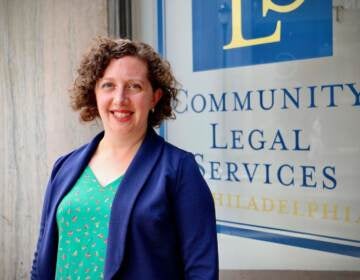If more people attended criminal court, we could advance criminal justice. Here’s how
Court-watching makes our justice system fairer and builds an educated public, writes Jeremy Isard.

(JanPietruszka/Bigstock)
As we near the peak of the 2022 midterm election cycle, the issue of crime is increasingly cast into our living rooms.
In Pennsylvania, commercials from the campaigns of Lt. Gov. John Fetterman, Dr. Mehmet Oz, Attorney General Josh Shapiro, and state Sen. Doug Mastriano feature crime rates, the specter of criminalized abortion, and even sentence commutations, in a battle for voter support. The same is true of local news, which often devotes more airtime to petty crime than the climate crisis.
Fortunately, there’s a seldom-invoked constitutional protection that can cut through the fog of these living room wars: the public trial.
Most Americans approach going to court like going to the DMV — that is, they only go when they have to. That’s unfortunate, because if more people attended criminal court proceedings, we could move the criminal justice debate beyond the bluster of punditry.
Besides, criminal courtrooms can be far more entertaining — and horrifying — than the DMV. Seeing what criminal justice looks and feels like from inside the courtroom would enhance people’s understanding of the toll the justice system has exacted on many American communities, and why law enforcement and the courts alone aren’t equipped to reduce the crime they were (ostensibly) designed to prevent.
Barring a few limited exceptions, you have a constitutional right to walk right in and observe court proceedings. At first, you’ll notice how mundane it all seems. When there is no press and no public audience, the atmospherics of many criminal courtrooms make them feel like an assembly line. Some judges process dozens of criminal cases in a morning, imposing decades of jail time before lunch. In some cases, the evidence itself is rote — like a police officer at his desk with a joystick and a pole camera, observing marijuana passed between neighbors miles away. Defendants rotate in and out, but otherwise, it is the same people every hour, every day: judge, stenographer, courtroom clerk, police liaison. This routinized environment allows biases to thrive and caricature to take the place of facts.
One way to break the stupor is to change the audience. Public court attendance is good for both the observer and the system. As a public defender, I often insist that my clients bring their family, friends, clergy, and mentors to court.
This sometimes has more impact than my best legal argument. It reminds the judge that my client is part of a larger community, one that took the time to come to court, and can perhaps provide accountability. But there is a less obvious dynamic at play: The judge and prosecutor must now perform their duties under the gaze of the public for whom they work.
Their presence demands accountability and individualized justice from the court. This effect increases when random, impartial spectators arrive. Inconspicuous court-watching provides an uncurated account of what justice looks like, and viewers get to see what really happens with tax dollars marked for police and prosecution.
Court-watching programs to enhance courtroom fairness exist across the country. In Atlanta, for example, the Southern Center for Human Rights uses court watching to combat the criminalization of poverty. On one recent morning, their investigator witnessed a 56-year-old Black man in a wheelchair jailed for pedestrian walking in the roadway. There are similar initiatives in Philadelphia, New Orleans, Chicago, New York City, and Nashville.
In addition to election-year fear-mongering, too much of our public legal education comes from television. “Law and Order” remains among the most-watched TV shows in the country. Scholars have long tried to quantify the “CSI Effect,” the impact of TV dramas on real-life jury verdicts.
Meanwhile, many Americans steer clear of jury service, people of color are underrepresented on juries across the country, and all-white juries make worse decisions.
Court-watching makes our justice system fairer and builds an educated public. Getting a complete cross-section of society into the courtroom as spectators will reduce the alienation felt by many of us when we report for jury duty.
It will help the court feel like a community institution. Most importantly, it will present the public with a real portrait of what occurs, which in turn may make for better jurors and a voting public better equipped to champion a more equitable judicial system.
I encourage you to walk into any big city criminal courthouse any day of the week. It will cost you nothing but an afternoon.
Jeremy Isard is a public defender and trial attorney in Philadelphia, where he represents clients charged with felony offenses. He grew up in Drexel Hill.

Your go-to election coverage
WHYY is your source for fact-based, in-depth journalism and information. As a nonprofit organization, we rely on financial support from readers like you. Please give today.





